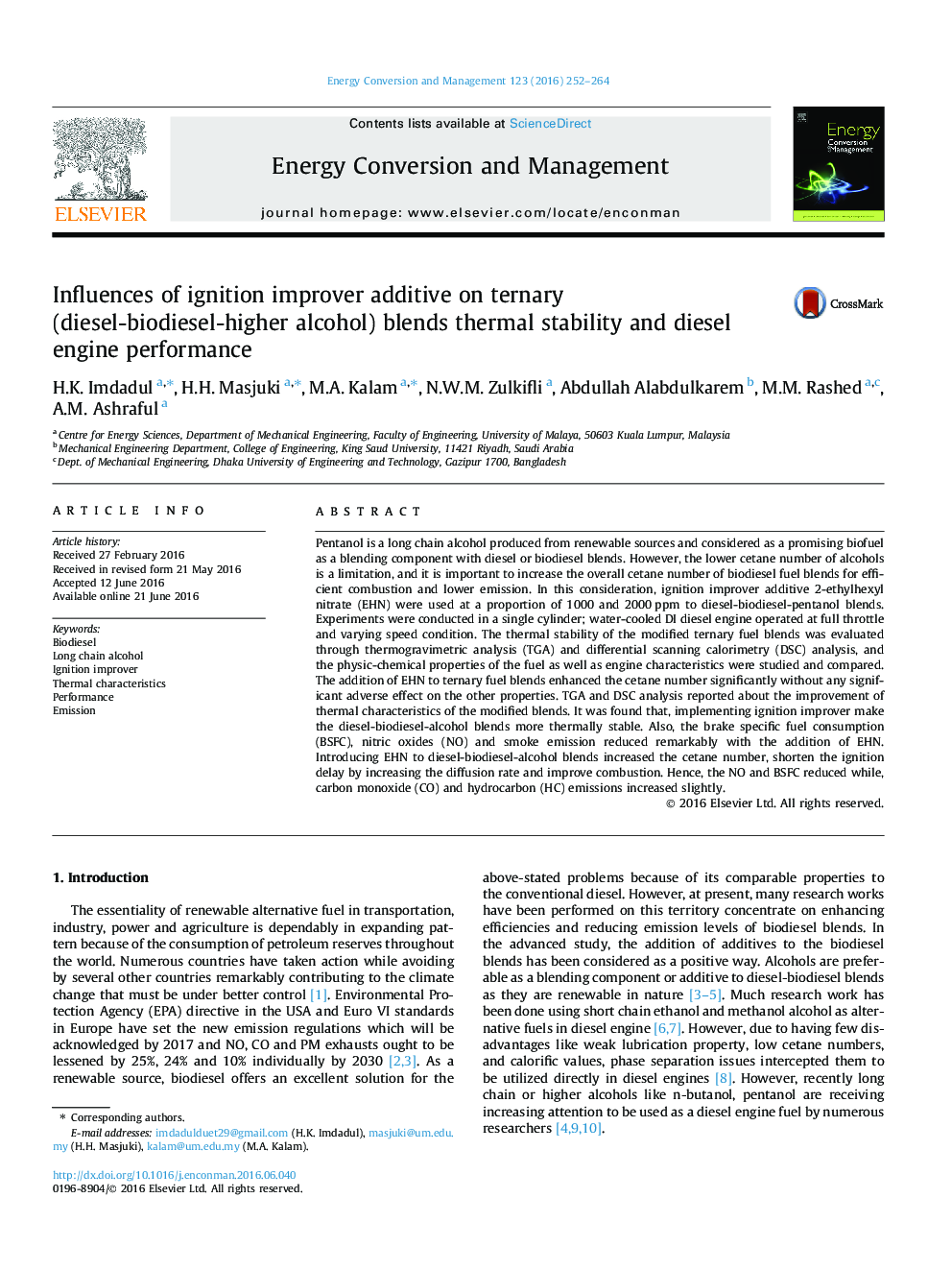| Article ID | Journal | Published Year | Pages | File Type |
|---|---|---|---|---|
| 760125 | Energy Conversion and Management | 2016 | 13 Pages |
•Ignition improver additives makes the biodiesel-alcohol blends more thermally stable.•Density and cetane number improved significantly with EHN mixing.•BP and BSFC improved by adding ignition improver additives.•Nitric oxides and smoke of the EHN treated blends decreased.•CO and HC increased slightly with EHN addition.
Pentanol is a long chain alcohol produced from renewable sources and considered as a promising biofuel as a blending component with diesel or biodiesel blends. However, the lower cetane number of alcohols is a limitation, and it is important to increase the overall cetane number of biodiesel fuel blends for efficient combustion and lower emission. In this consideration, ignition improver additive 2-ethylhexyl nitrate (EHN) were used at a proportion of 1000 and 2000 ppm to diesel-biodiesel-pentanol blends. Experiments were conducted in a single cylinder; water-cooled DI diesel engine operated at full throttle and varying speed condition. The thermal stability of the modified ternary fuel blends was evaluated through thermogravimetric analysis (TGA) and differential scanning calorimetry (DSC) analysis, and the physic-chemical properties of the fuel as well as engine characteristics were studied and compared. The addition of EHN to ternary fuel blends enhanced the cetane number significantly without any significant adverse effect on the other properties. TGA and DSC analysis reported about the improvement of thermal characteristics of the modified blends. It was found that, implementing ignition improver make the diesel-biodiesel-alcohol blends more thermally stable. Also, the brake specific fuel consumption (BSFC), nitric oxides (NO) and smoke emission reduced remarkably with the addition of EHN. Introducing EHN to diesel-biodiesel-alcohol blends increased the cetane number, shorten the ignition delay by increasing the diffusion rate and improve combustion. Hence, the NO and BSFC reduced while, carbon monoxide (CO) and hydrocarbon (HC) emissions increased slightly.
